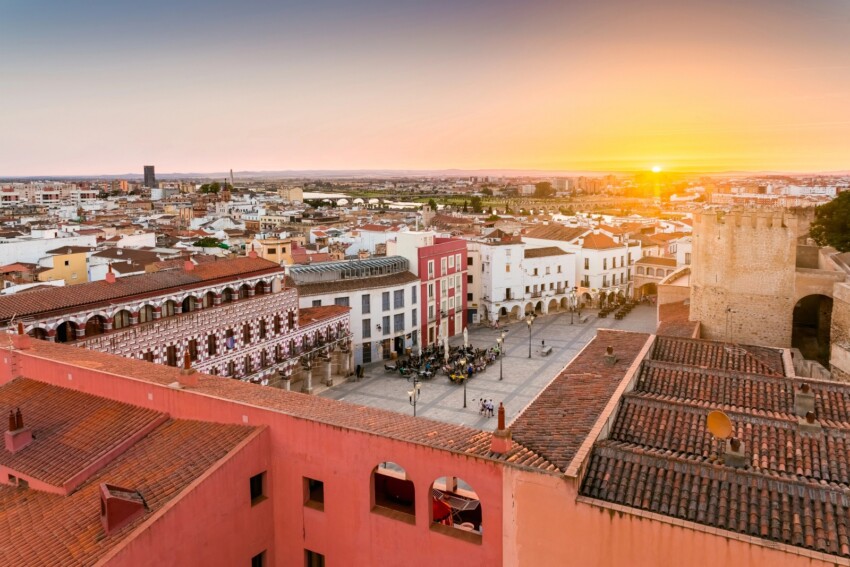

In Extremadura, one of Spain’s most authentic regions, lies one of the country’s largest provinces: Badajoz. It is a land of contrasts, where diverse landscapes such as pastures, oak forests, mountains and stretches of Mediterranean vegetation follow one another.
It is also a border land: Portugal is only 6 km from Badajoz, a detail that has profoundly marked the city’s history. The historic centre is crossed by the Guadiana River and here and there picturesque glimpses open up among its narrow streets. It is perhaps not the most picturesque or romantic city in Spain, yet Badajoz has much to offer to those who have decided to stop there instead of continuing straight on to other destinations.
It boasts the largest Arab fortress in Spain, a state-of-the-art auditorium that enchants tourists with its colour-changing façade, well-kept museums, relaxing parks and a tasty local cuisine that will delight gourmet travellers.
Less crowded and cheaper than the big stars of Spanish tourism, Badajoz is a chance to get to know Spain in depth, without being dazzled by the lights of famous attractions.
Take a look at the list of things to see in Badajoz and you will quickly realise that it is unfair to consider this city only as a stopover. There are enough attractions (and restaurants!) to keep you busy for a whole day or more.
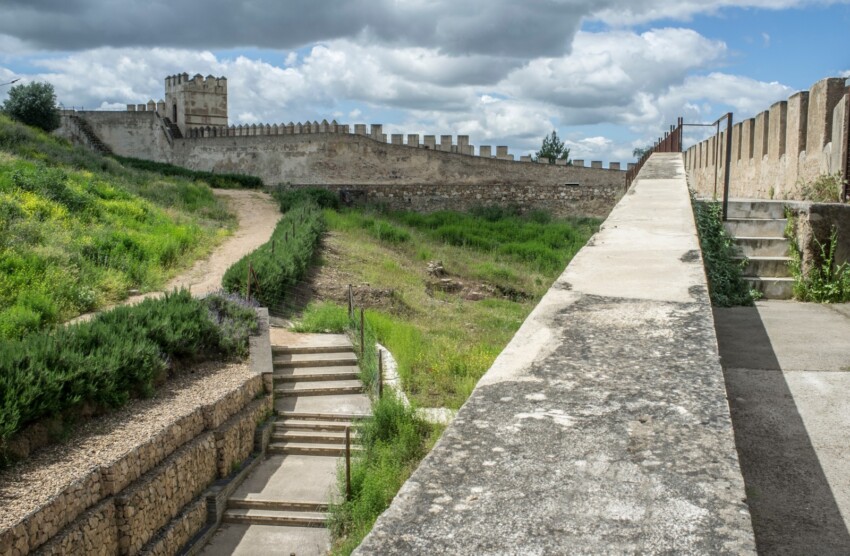
A must-see attraction in Badajoz is the Alcazaba, a magnificent Arab fortress built on the site that was the original nucleus of the city. A proud witness to centuries of history, it was the home of the kings of the Kingdom of Taifa and a strategic defensive construction to control the borders between Spain and Portugal.
The fortress we admire today is the result of modifications made in the 12th century on an earlier construction that probably dates back three centuries. With an area of 72,500 square metres, it is the largest Arab fortress in Spain and is a small city within a city, with four gates along the defensive walls, towers, palaces, gardens and churches. Today it also houses museums, libraries and university faculties.
For tourists, a visit to the citadel of the Alcazaba is a walk back in time with exceptional photographic opportunities: the view from the top is impressive, and at sunset it becomes even more magical.
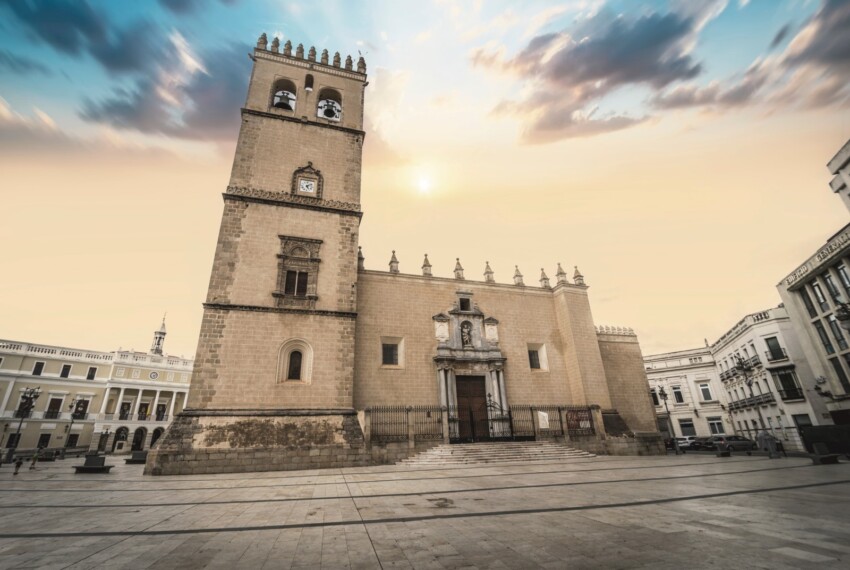
From the outside it looks like a fortress, dominated by a 41-metre high tower, but the Cathedral of Badajoz is a treasure chest.
Built in the 13th century and dedicated to St John the Baptist, this architectural masterpiece has been the location for prestigious events such as the historic wedding between John I of Castile and Beatrice of Portugal.
The interior is a fine example of decadent Gothic architecture and has 12 minor chapels. During the visit, you can admire elaborate 17th-century wrought-iron works in the Portuguese style, the choir with three Baroque organs, the altar and a magnificent collection of Flemish tapestries.
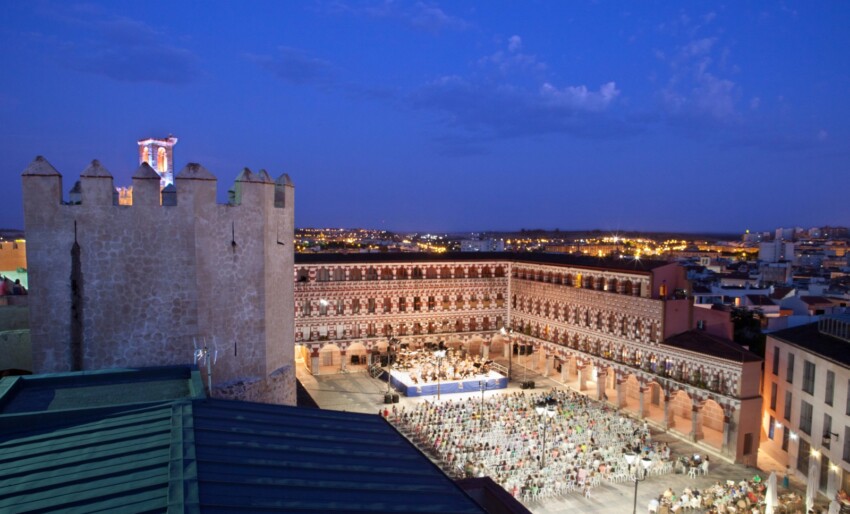
Plaza Alta is the historical heart of Badajoz and one of the city’s most attractive urban spaces. This porticoed square, dating back to the 16th century, is surrounded by brightly coloured buildings that create a unique atmosphere. The recently restored façades present a combination of Mudejar and Renaissance styles.
The square is particularly lively during summer evenings, when bars and restaurants set up their tables outside. It is also the venue for numerous cultural events and festivals throughout the year.
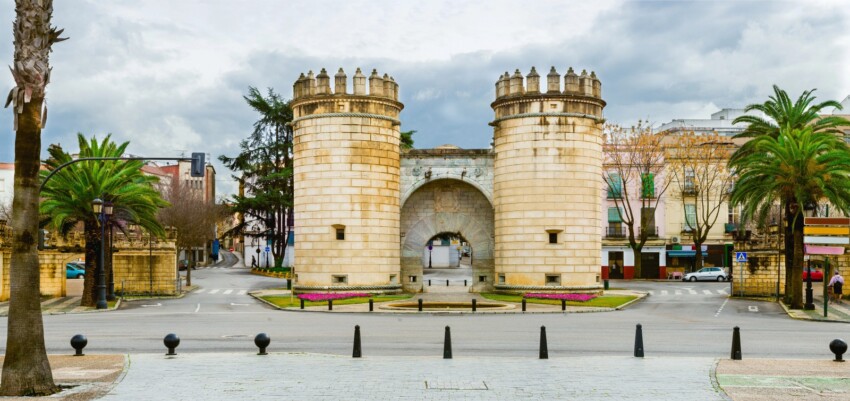
The Puerta de Palmas is the symbol of Badajoz and one of the most photographed monuments of the city. This monumental gateway from the 16th century, which was once the main entrance to the city, is flanked by two cylindrical towers and is an excellent example of Renaissance military architecture.
The bridge that precedes it, also of Roman origin but rebuilt several times, crosses the Guadiana River and offers one of the most impressive views of the city,
particularly at sunset.
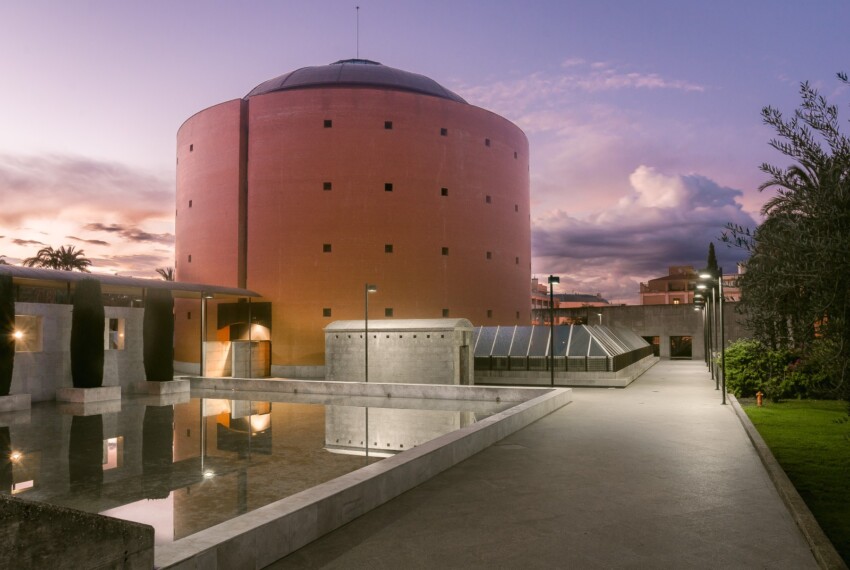
From a gloomy building that no one wanted to enter, the old prison of Badajoz has been transformed into one of the most interesting and colourful museums in the city.
Since 1995 it has housed the MEIAC (Extremadura and Ibero-American Museum of Contemporary Art), a museum of contemporary Spanish, Portuguese and Ibero-American art. The MEIAC’s exceptional collection has over 1,500 pieces, including works by important artists such as Luis Buñuel, Ouka Leele, Equipo 57, Daniel Canogar, Eduardo Naranjo and Pablo Palazuelo.
The museum occupies what was once the main building of the prison complex, cylindrical in shape: it was built in the 1950s on the remains of an earlier military bastion known as Pardaleras Fort. It has four floors and includes a section for the permanent exhibition and one for temporary exhibitions, plus a lovely garden.
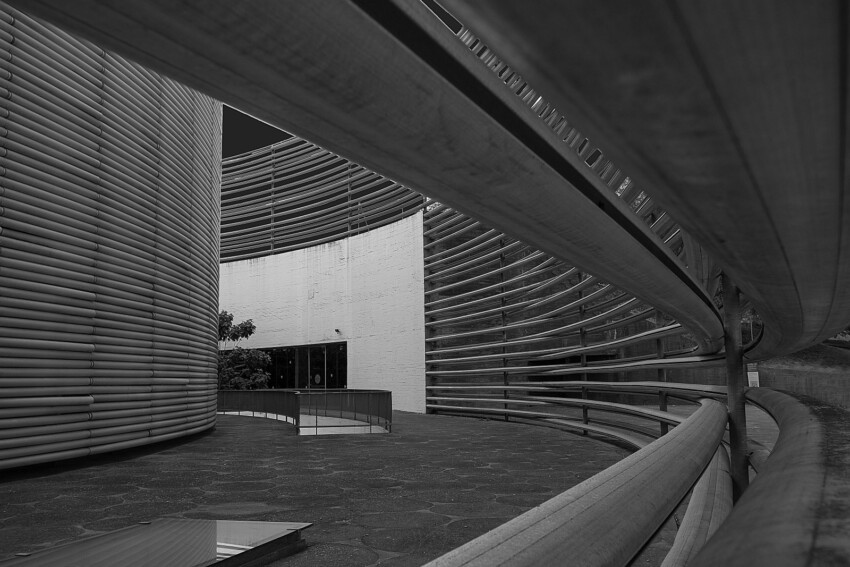
The Congress Palace is the pride of modern Badajoz: a jewel of contemporary architecture that has already won prestigious design awards from MOMA. Its avant-garde structure is designed to harmonise with the historical heritage that surrounds it and a piece of the city walls has been integrated into the building.
It includes a 900-seat auditorium, used for events of all kinds, but it is not necessary to go inside to appreciate this futuristic building: the façade that changes colour according to the reflections of light is one of the images of Badajoz that sticks in visitors’ memories.
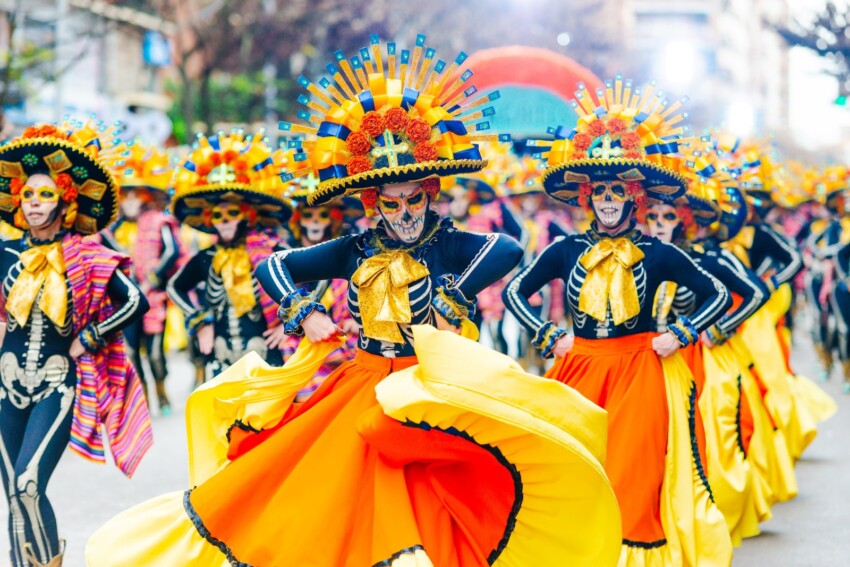
Carnival is one of the most important events in the city of Badajoz, awaited by all citizens and experienced with great enthusiasm. If you cannot visit the city during the days of wild celebration or if you want to relive the emotions of those days, a visit to the Carnival Museum of Badajoz is a must.
You will be able to admire some of the elaborate costumes worn each year during the city’s parades, a selection of lyrics and music from local bands, a reproduction of a costume workshop and a series of historical documents that tell the evolution of carnival from an ancient pagan festival to the tradition of today.
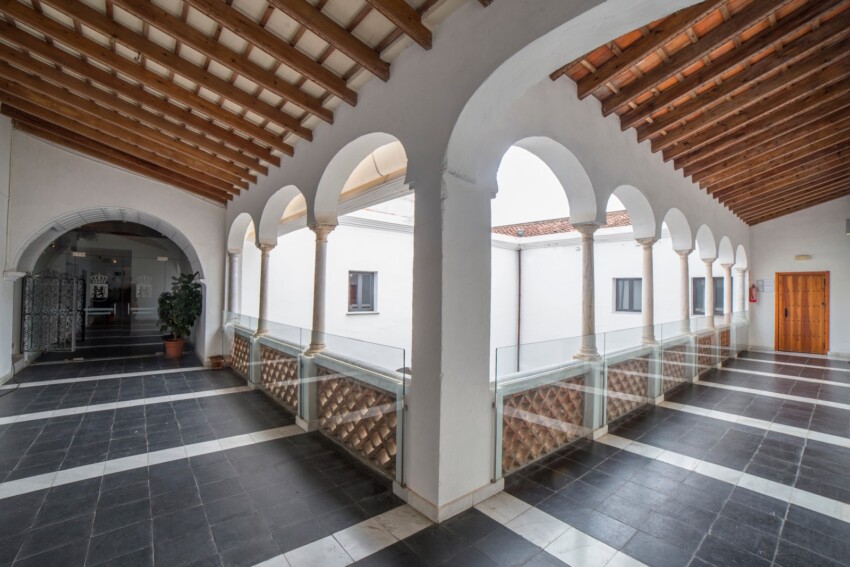
The Luis Morales City Of Badajoz Museum is a local museum that will introduce you to the history of the city from the first settlements through the Roman, Visigothic and Arab conquests to the present day, as well as one of Badajoz’s best-known citizens.
The venue is the 16th-century house of the painter Luis Morales, an artist who decorated numerous palaces and churches between Spain and Portugal and to whom a room in the museum is dedicated.
To visit Badajoz at a more leisurely pace, take note of these points of interest:
For those with more time on their hands, there are wonderful day trips around Badajoz, perhaps to Merida (capital of Extremadura) or to the national parks of Monfragüe and Cornalvo.
In the following map you can see the location of the main places of interest mentioned in this article.
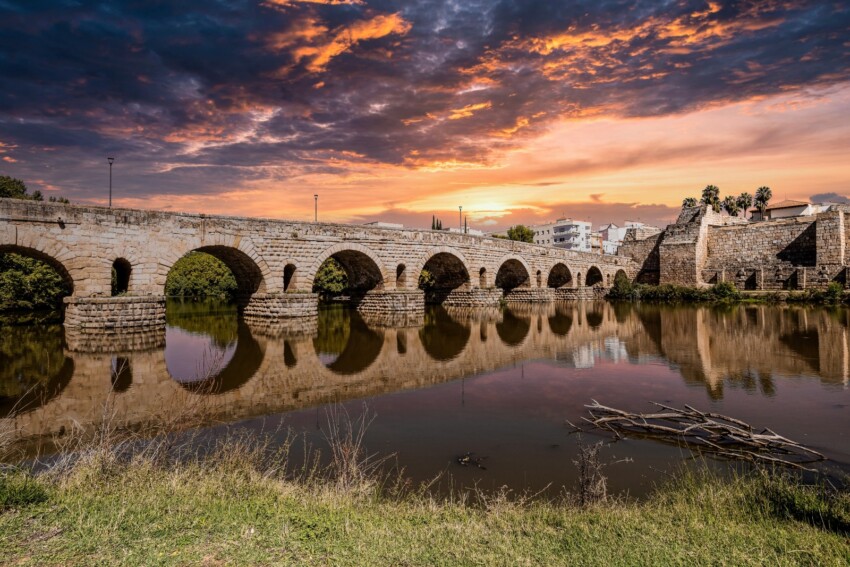
Badajoz’s strategic location makes it an ideal starting point for exploring Extremadura and Portugal. Renting a car is recommended for maximum flexibility.
Mérida, the ancient Roman capital of Lusitania, is located just 60 km from Badajoz. The city boasts one of the best-preserved Roman archaeological complexes in Spain, including an impressive Roman theatre, an amphitheatre and the Temple of Diana. The National Museum of Roman Art, designed by Rafael Moneo, is one of the best of its kind.
The Portuguese city of Évora, a UNESCO World Heritage Site, is located about 100 km from Badajoz. Its perfectly preserved medieval old town, Roman temple and the macabre Capela dos Ossos make it an unmissable destination for a day trip.
The Cornalvo Natural Park, about 70 km from Badajoz, offers beautiful landscapes of dehesa (pastures with oak trees) and the opportunity to observe wildlife. The park also includes a Roman dam still in use and several well-marked hiking trails.
The town of Olivenza, only 24 km from Badajoz, is an interesting example of the fusion of Spanish and Portuguese culture. Its historical centre preserves important monuments of both traditions and its gastronomy reflects this dual influence.
Badajoz is not a very touristy city, so the choice of hotels is less than in more famous Spanish locations, but it is still good and prices are cheap.
Most of the accommodation in Badajoz is concentrated in the lower-middle price range (mostly hostales, family-run hotels, unpretentious but generally clean and comfortable), but there is no shortage of luxury accommodation. Those looking for something special can choose from three 4- or 5-star hotels, including some with swimming pools.
Almost all hotels are located in the centre or a few kilometres away.
Badajoz has a small airport served only by domestic flights. The easiest way to get to Badajoz is… go to Portugal! Lisbon is the nearest city that offers good air connections, including those of low-cost airlines.
From the Portuguese capital you can easily reach Badajoz with a rented car; alternatively, there is a direct bus service. The journey time is only two hours, but the frequency of trips is limited to one/two per day, depending on the day and season.
If you are already in Spain, you will have no difficulty in reaching Badajoz by car: the city is a major commercial centre and is therefore well connected to the main motorways of Spain.
Getting around by bus is also quite easy: with a direct bus you can get to Caceres, Madrid, Merida, Seville and Zafra. In the case of the train, it depends a lot on the location: some journeys are long and expensive, so it is better to use this means to travel within the Extremadura region.
What's the weather at Badajoz? Below are the temperatures and the weather forecast at Badajoz for the next few days.
Badajoz is located in Extremadura, practically a stone's throw from the Portuguese border. From there, you can reach Elvas in less than half an hour.